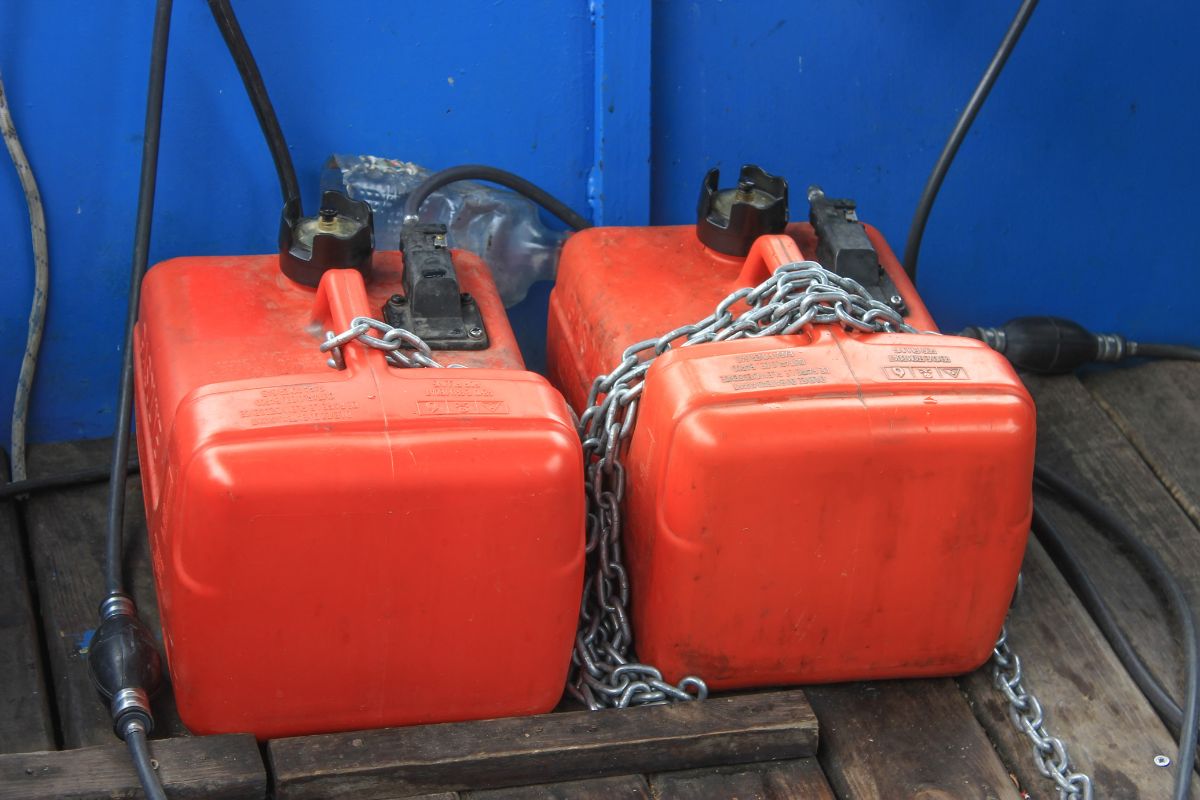Cleaning your fuel tank is an essential part of maintaining your vehicle’s fuel system, as it helps to remove contaminants and prevent damage to the engine.
However, removing a fuel tank for cleaning can be a time-consuming and complex process. The good news is that there are safe and effective methods for cleaning a fuel tank without having to remove it.
In this guide, we’ll walk you through the steps to clean a fuel tank using these methods, including tips on avoiding damage and ensuring proper fuel system performance.
With the right tools and techniques, you can keep your vehicle’s fuel tank clean and in good working condition.
What Tools Are Required To Clean A Fuel Tank?
To clean a fuel tank without removing it, you’ll need the following tools:
- Fuel tank cleaning solution: A fuel tank cleaning solution that contains detergents and solvents designed to dissolve and remove contaminants or residue in the fuel tank.
- Water: To dilute the cleaning solution and rinse the tank after cleaning.
- Fuel pump or siphon: To drain the fuel tank before cleaning.
- Drain valve or siphon pump: To drain the cleaning solution and water mixture from the fuel tank after cleaning.
- Shop vac or towels: To dry the inside of the tank after rinsing.
It’s also important to have personal protective equipment (PPE) such as gloves, safety glasses, and a dust mask to protect yourself from any harmful fumes or chemicals that may be present during the cleaning process.
Additionally, you may need a socket set or wrench to remove and reinstall the fuel tank.
How To Clean A Fuel Tank: Step By Step
Here are the step-by-step instructions for cleaning a fuel tank without removing it:
- Prepare the Vehicle: Before starting, park the vehicle in a well-ventilated area and disconnect the battery to prevent any electrical sparks. Drain the fuel tank as much as possible, using a fuel pump or siphon if necessary.
- Add Cleaning Solution: Next, pour a fuel tank cleaning solution into the tank. The solution should contain a mixture of detergents and solvents designed to dissolve and remove any contaminants or residue in the fuel tank.
- Fill the Tank: Fill the tank with water to dilute the cleaning solution. Then, drive the vehicle around for about 10-15 minutes to allow the cleaning solution to agitate and loosen any debris or buildup inside the tank.
- Drain the Tank: After driving, drain the water and cleaning solution mixture from the fuel tank using the drain valve or siphon pump.
- Repeat the Process: If necessary, repeat the process with a fresh cleaning solution and water mixture until the tank is clean and free of contaminants.
- Rinse and Dry the Tank: After cleaning, rinse the tank with fresh water to remove any remaining cleaning solution or debris. Use a shop vac or towels to dry the inside of the tank thoroughly.
- Add fresh fuel and reconnect battery: Add fresh fuel. Reconnect the battery, and start the vehicle to ensure proper fuel system performance.
Tips For Avoiding Damage To A Fuel Tank

When cleaning a fuel tank without removing it, it’s essential to take precautions to avoid damage to the tank or fuel system. Here are some tips to help you avoid damage:
- Use the Right Cleaning Solution: Use a cleaning solution that is specifically designed for cleaning fuel tanks. Using the wrong type of cleaner can damage the tank or fuel system components.
- Dilute the Cleaning Solution: Dilute the cleaning solution with water to avoid damage to the tank or fuel system components. Using an undiluted cleaning solution can cause corrosion or other damage.
- Don’t Overfill the Tank: Only fill the tank with the amount of cleaning solution and water mixture recommended by the cleaning solution manufacturer. Overfilling the tank can cause damage to the tank or fuel system.
- Avoid Harsh Chemicals: Avoid using harsh chemicals or abrasive tools that can damage the tank or fuel system components.
- Don’t Use Excessive Force: Avoid using excessive force when cleaning or rinsing the tank to avoid damaging the tank or fuel system components.
Ensuring Proper Fuel System Performance
After cleaning a fuel tank without removing it, it’s important to take steps to ensure proper fuel system performance. Here are some tips to help you ensure that your vehicle’s fuel system is working properly after cleaning:
- Refill the Tank with High-Quality Fuel: Refill the fuel tank with high-quality fuel to ensure optimal performance. Avoid using low-quality or contaminated fuel, which can cause engine problems.
- Check the Fuel Filter: Check the fuel filter for any signs of damage or clogging. Replace the fuel filter if necessary to ensure proper fuel flow.
- Check the Fuel Pump: Check the fuel pump for any signs of damage or wear. A damaged fuel pump can cause a decrease in fuel pressure, which can lead to engine problems.
- Monitor the Vehicle’s Performance: Monitor the vehicle’s performance after cleaning the fuel tank. If you notice any changes in performance, such as decreased fuel efficiency or engine hesitation, have the vehicle checked by a professional mechanic.
- Regular Maintenance: Regularly maintain your vehicle’s fuel system by replacing the fuel filter and having the fuel injectors cleaned. Regular maintenance can help to prevent fuel system problems and ensure optimal performance.
Final Thoughts
Cleaning a fuel tank without removing it is a cost-effective way to improve fuel system performance and avoid costly repairs.
By using the right cleaning solution, diluting it properly, and taking precautions to avoid damage to the tank or fuel system components, you can successfully clean your fuel tank without removing it.
It’s also important to refill the tank with high-quality fuel, check the fuel filter and pump, monitor your vehicle’s performance, and perform regular maintenance to ensure proper fuel system performance.
By following these tips, you can help to keep your vehicle running smoothly and avoid costly repairs.


